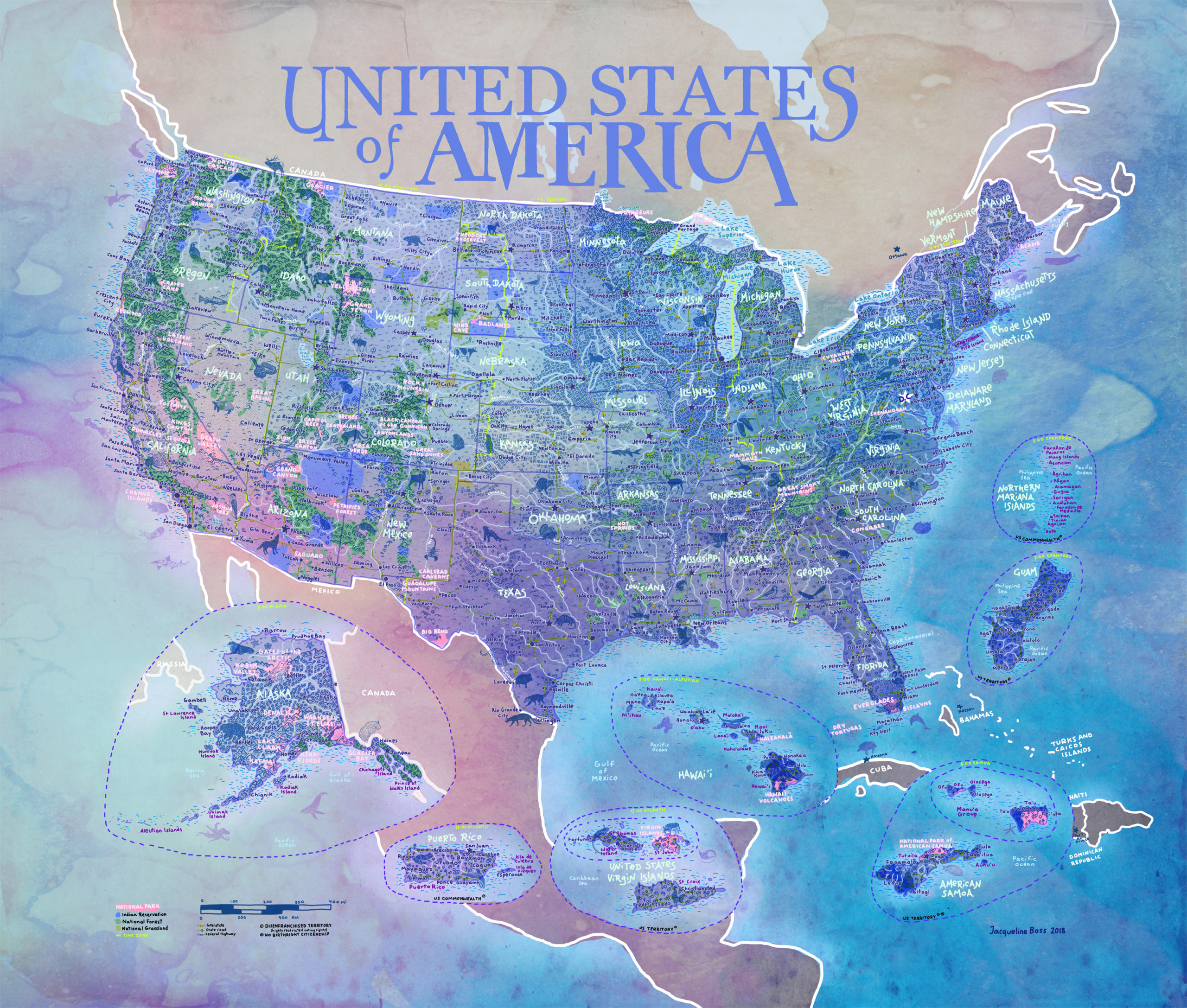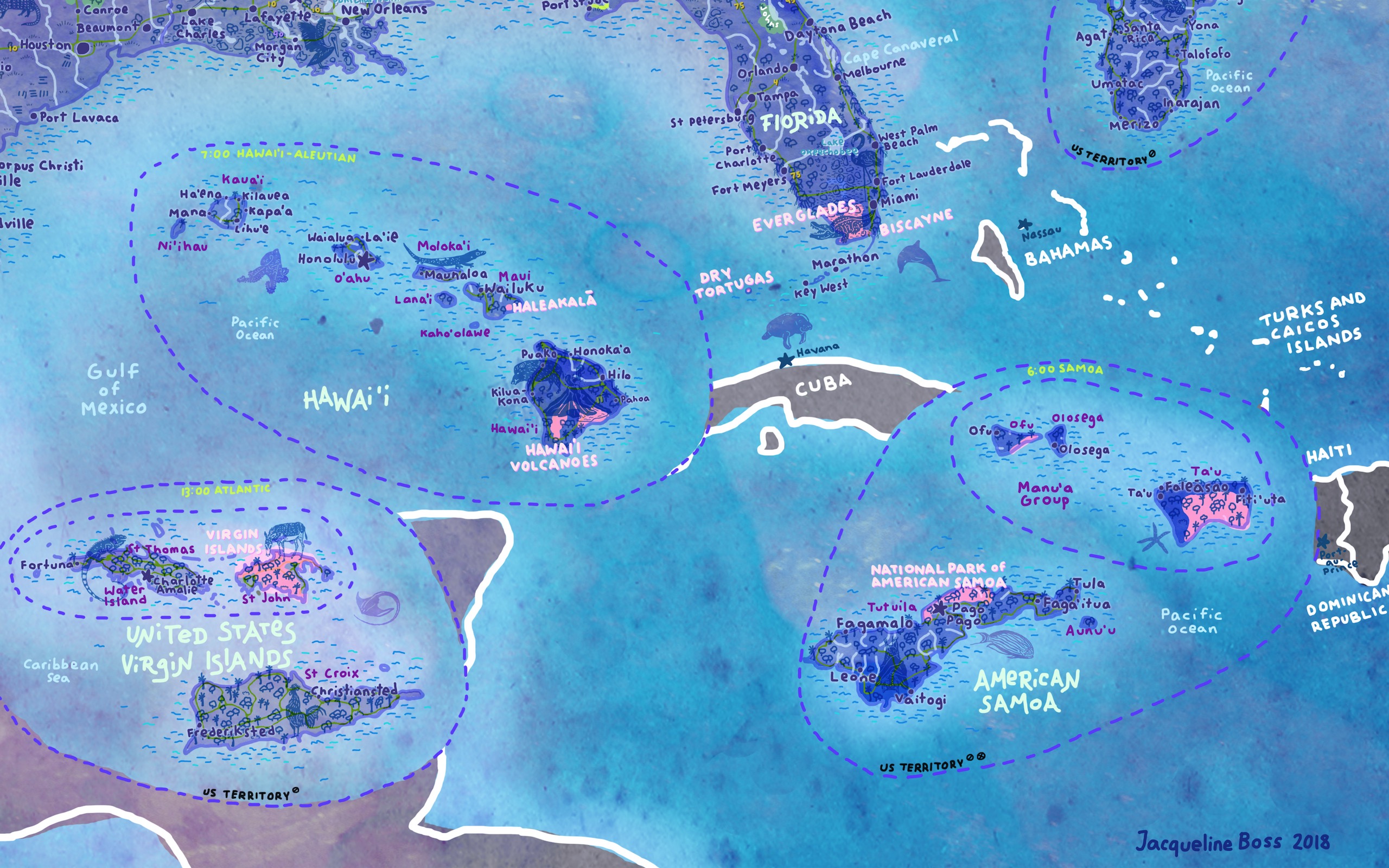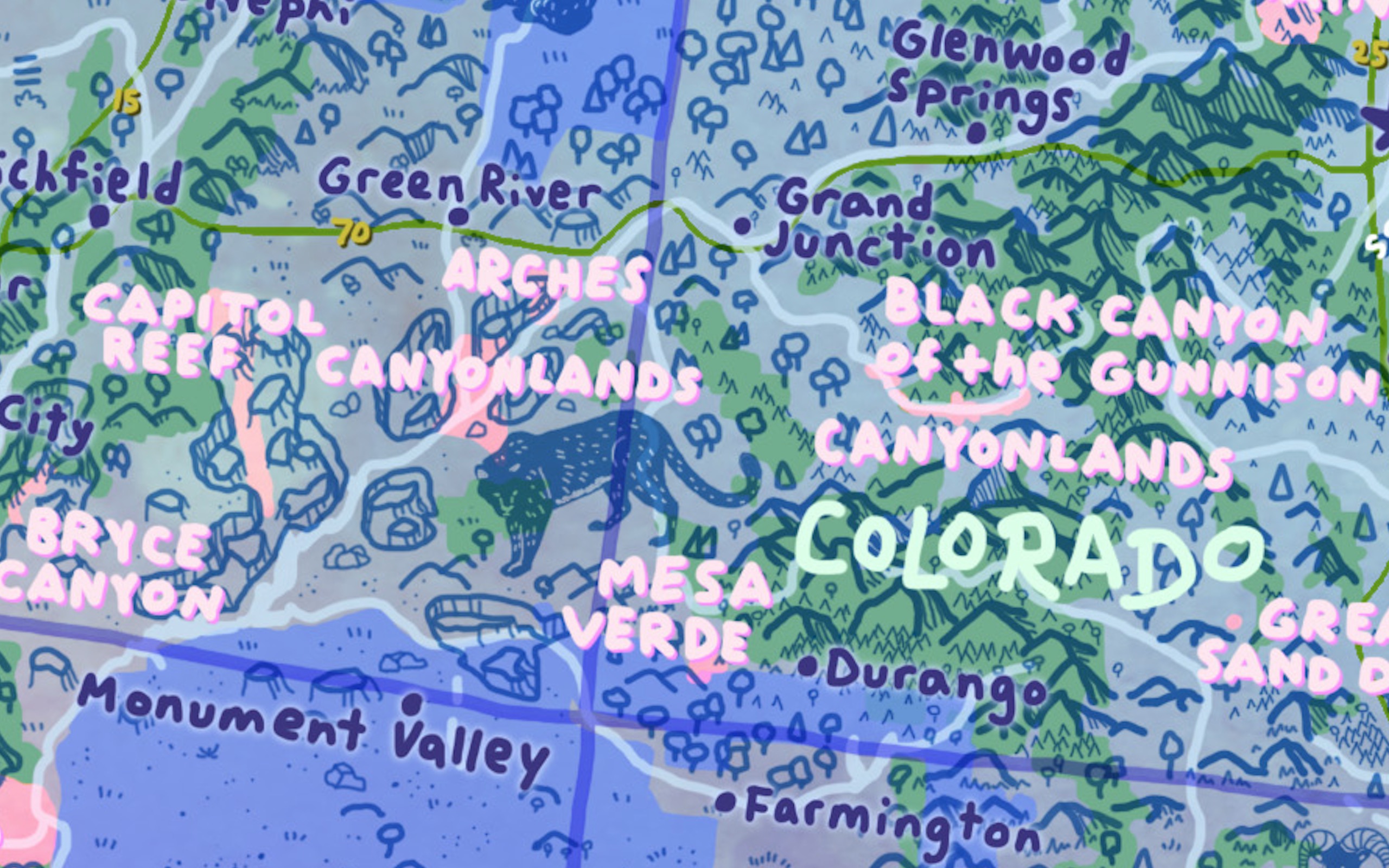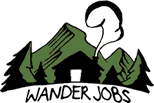The adventure map I was looking for didn’t exist.
It needed to celebrate traveling and nature. It should have cities and roads and national parks. And it should be a work of art in its own right. After long search, I had to admit that such a map didn’t exist.
Exactly zero art maps included the US territories.
Fine, I thought. I’ll make it myself.
The process was a long one that involved compiling information from dozens of maps and layering detailed information in a visually useful way. I wanted to hand-draw the entire landscape and I wanted the whole map to be beautiful with my own stylistic stamp.

Why don’t we ever see the Northern Mariana Islands on a US map?
If you live in the continental US, you sort of kind of know what and where Puerto Rico is. A territory, but not quite a state, maybe? Can they vote? Do they get the same aid during natural disasters? Do you need a US passport to get there? What is daily life like?
You might know the United States Virgin Islands and Guam by name, but have you even heard of the other populated US territories- American Samoa (pronounced with the accent on the first syllable) or the Northern Mariana Islands? If you grew up in the US public school system, probably not.
Doug Mack, the writer of one of the only published books about the US territories, The Not-Quite States of America, notes that there was almost no formally published information about the territories before his book came out. What he did come across in his research was old, insubstantial, hard to find, or dense and incomprehensible.
While it’s not my goal here to give a history of these US occupied islands, I do want to point out that in a very real sense, that’s what they are- occupied. Colonies. Their populous pay taxes and fight in the US military, yet are banned from voting in US presidential elections. American Samoans are not even given citizenship as a birthright.
Do people in these territories want to be citizens with full voting power? Do they wish the US would leave their homelands so they can govern themselves? Do they prefer to keep things just as they are? It’s problematic that we haven’t even considered these questions.

The US has one of the best national park systems in the world.
These 61 pockets of wilderness attract outdoor enthusiasts from around the world. For those lucky enough to have access to the parks (as well as national forests, grasslands, and seashores), the quiet unspoiled places of wilderness provide hefty psychological and physical benefits.
Meditation is getting its day in the spotlight as more and more westerners realize the value of the practice. Spending time in nature is meditative.
Smelling pine resin from old trees as sunlight flashes green between blowing leaves, can and does massively decrease stress levels that have reached epidemic levels in the US. National parks are awesome in the purest sense of the word, the landscapes almost dreamlike in their all-encompassing size and power. They make you feel small again, and connected to a larger world.

If you’ve seen grizzly bears, dolphins, scorpions, and flamingos in the wild, you’re probably a homo sapien in the USA.
Humans are not alone on the planet and we can’t operate in a vacuum. Every species has an important role, and when one is removed, it causes an entire chain to course-correct in an unexpected and dangerous direction. We’re currently seeing coral bleaching, salmon over-fishing, logging of old growth forests, migration route disruption, and more.
Animals are clever and adaptable, and if we want to make sure the world is a healthy place for humanity in the future, we should do some of the things that make it easier for the animals we are displacing to adapt to a world with too many people, and all that brings.
Wildlife overpasses, natural lawns in suburbia, and literals caps on outdoor lighting fixtures are some straightforward fixes- along with, of course, the many more complicated political measures that need to be taken to curb global warming.
It’s also important to understand that global warming will hit the US territories, which are small, warm weather islands, much harder and faster than the mainland states. We’ve already seen Hurricane Irma in the USVI, Hurricane Maria in Puerto Rico, and Typhoon Yutu in the Northern Mariana Islands since late 2017.
We should all have some reservations about reservations.
Another conspicuous absence on maps that should give us pause are over 300 Indian Reservations. These semi-independent nations-within-nations have their own laws and governments. For the most part, they have to conform to US law, but there are a few places where laws diverge.
Most US citizens know the history of Native Americans perhaps only marginally better than they know the history of the territories, and know little about life on reservations
One thing is for sure, and it’s that reservation life is not the same as historical tribal life, and it could not possibly be. Many living on reservations struggle with poor living conditions and low quality of life, their entire world views stolen away. The least we can do is begin to literally put them on the map.
Here, have a free map!
I make my art available for free in the public domain, so you are welcome to download this map, make changes (mark your travel routes and destinations!) and share your work.
There is a large-scale version for print that is only available for purchase. You can purchase your United States National Parks Adventure Map poster here.
